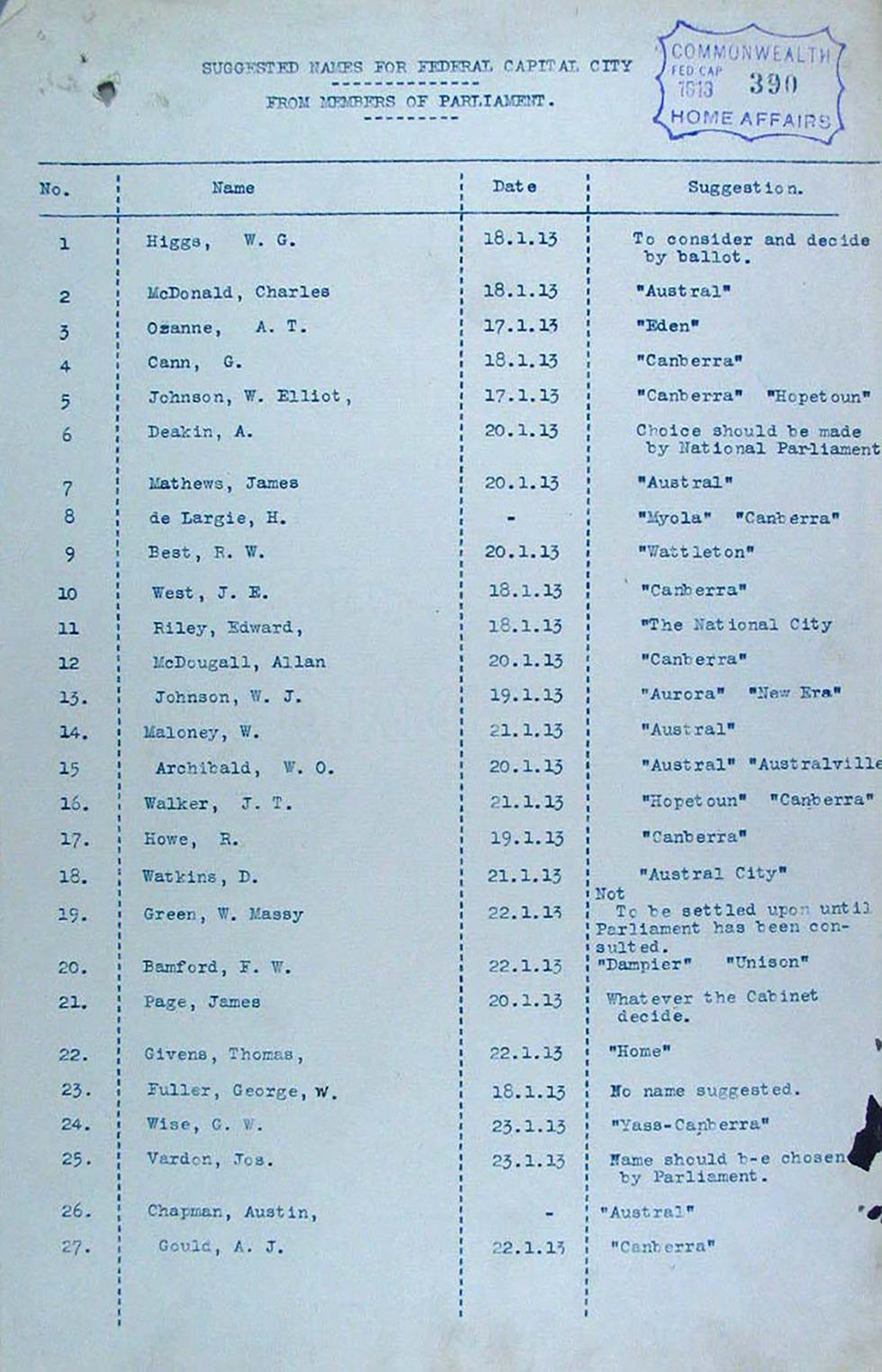


This is an official government document concerning suggestions from members of the House of Representatives for a name for Australia's new federal capital. There are four columns headed 'No.', 'Name', 'Date' and 'Suggestion'. It is titled 'Suggested Names for Federal Capital City / From Members of Parliament'. It is a typed document, bearing a Commonwealth Home Affairs stamp and file number indicating it is an official document of the Department of Home Affairs.
Educational value
- This is a unique government document showing part of the history behind the naming of Australia's federal capital. Suggestions for names flowed in from the public and this document lists names provided by the 75 members of the House of Representatives between 18 January and 8 March 1913. This poll was concluded only days before the name was officially announced on 12 March 1913.
- The document shows that there were clusters of popular names. In many cases names were based on important people, places, or more intriguingly, on ideas. Of the 39 suggestions from 75 members of parliament, the most popular were: 'Canberra' (18 votes), 'Austral' (8 votes), 'Hopetoun' (5 votes) and 'Myola' (5 votes). Additionally, seven members registered protests by commenting the choice should be made by parliament or ballot. Other suggestions included 'Flinders', 'Home' and 'Wattleton'; the Minister for Home Affairs, King O’Malley, proposed ‘Shakespeare’.
- It is clear from this document that 'Canberra' was the most popular choice. The district was already known by this name, derived from the Ngunnawal/Kamberri people whose country it is. The European pronunciation was decided when the official version was announced by Lady Denman at the foundation ceremony on 12 March 1913. Her pronunciation was with the emphasis on the first syllable.
- The choice of 'Canberra' as the name for the capital reflects the common European use of the word as the district name for some 80 years. The first European settler in the area is thought to have been Joshua Moore, who named his station 'Canberry' or 'Kamberry'.
- As the Governor-General Lord Denman explained in his speech at the foundation ceremony, many people had suggested names and the topic had been widely discussed in the press. Many of the suggested names for the capital celebrated the joining of the six colonies to form the new nation, including 'Union City' and 'Unison'. Others reflected a sense of national aspiration and pride, such as 'The National City', 'Australville' and 'Eden'.
- A national capital was provided for in the Australian Constitution, and from the Federation of the Australian colonies in 1901 the question of a site had been the main issue. The final selection in 1908 of the area now known as the Australian Capital Territory meant that survey and planning could proceed. In 1911 the Commonwealth Government took control of the new Territory and announced a competition for a design for the new city. In 1912 the Government announced the winning design was that of North American architects Walter Burley Griffin and Marion Mahony Griffin.
Acknowledgments
Learning resource text © Education Services Australia Limited and the National Archives of Australia 2010.
Related themes
Need help with your research?
Learn how to interpret primary sources, use our collection and more.


